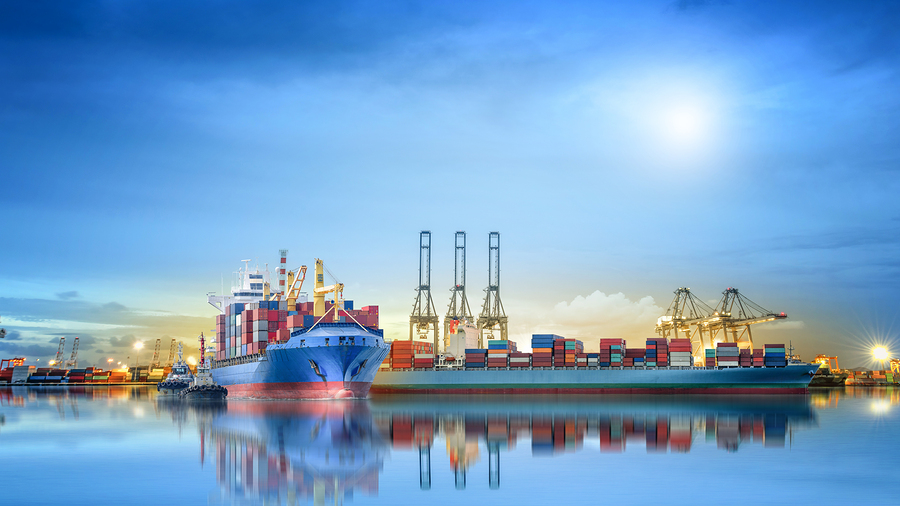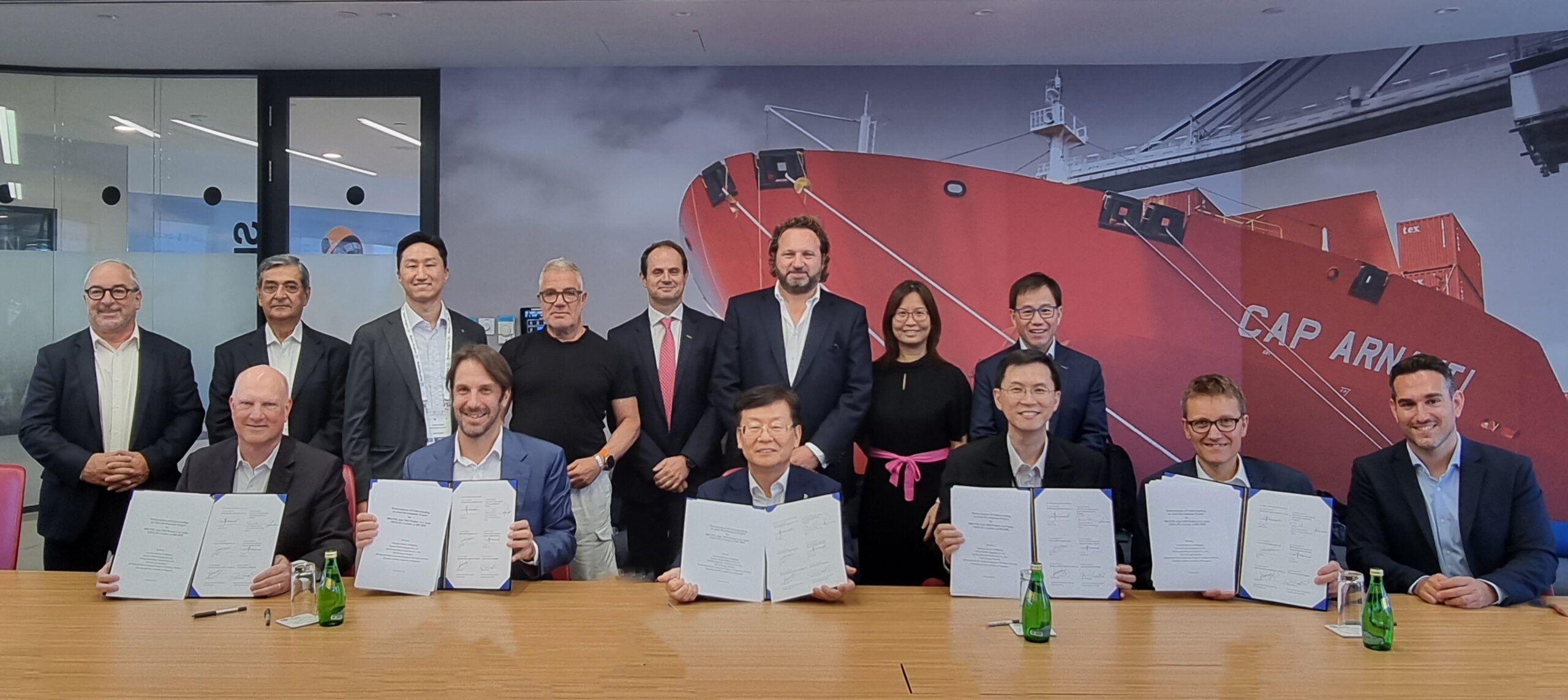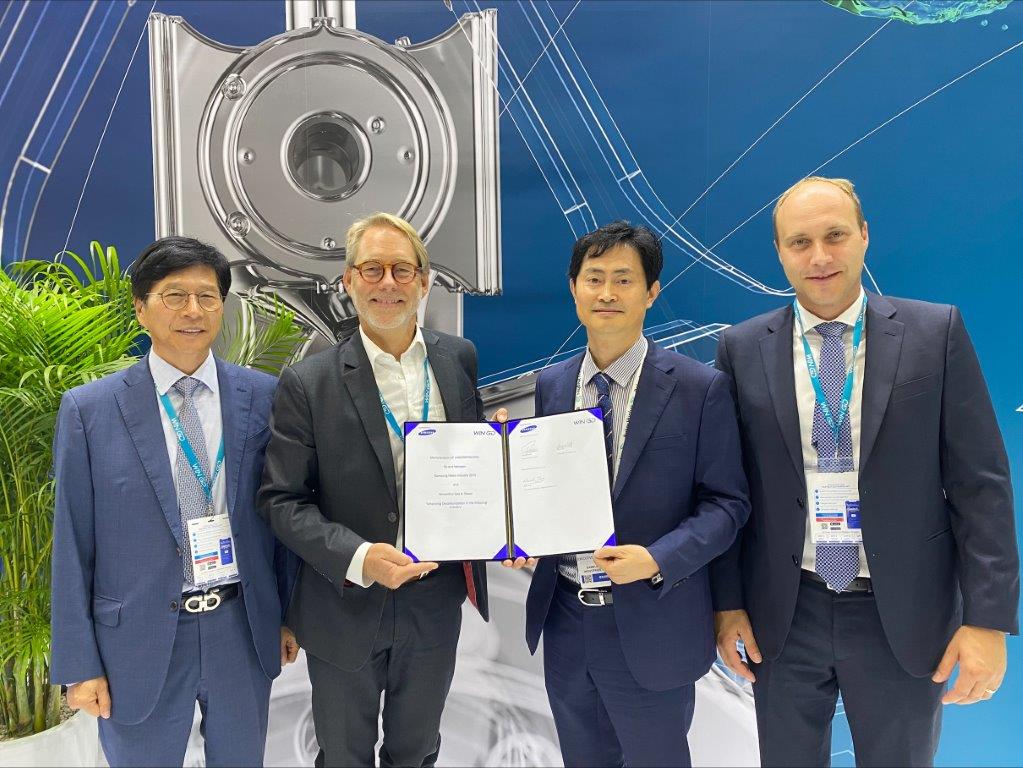Press release: Synthetic fuels produced from electricity, or e-fuels, will play an important role in reducing CO2 emissions from long-distance truck transport, aviation and shipping. For long-distance freight transport and shipping, synthetic methanol, diesel and LNG (Liquified Natural Gas) are the most attractive options; for deep sea shipping, synthetic ammonia is also an important option. For aviation, only e-kerosene is feasible.
Even though green hydrogen is needed to produce e-fuels, its applicability as a fuel in heavy transport is limited. This is demonstrated by a recently completed study by VoltaChem, TNO and SmartPort, together with market parties, of over a year, into the most promising e-fuels for heavy transport applications and their deployment.
“The transport sector is responsible for 23% of global CO2 emissions. Almost three-quarters of this comes from road transport. Aviation and shipping account for about 10% of the transport sector’s emissions each. In order to meet the climate goals, these emissions will have to be reduced by 95% by 2050. Shipping, aviation and heavy road transport are currently lagging far behind when it comes to contributing to sustainable mobility. They must therefore become drastically greener and e-fuels offer a way out as long as stakeholders from the entire value chain will take the necessary steps and increase production and investments in the related infrastructure”, says Richard Smokers of TNO, one of the authors of the whitepaper.
E-FUELS DIFFERENT FOR TRUCK TRANSPORT, SHIPPING AND AVIATION
The study looked into the possibilities for green hydrogen, and the e-fuels e-methanol, e-diesel, e-ammonia, e-LNG and e-kerosine from a user perspective. These e-fuels, like green hydrogen, hardly produce CO2 emissions because they are produced with electricity from renewable sources and circular carbon dioxide.E-fuels can reduce CO2 emissions from long-distance truck transport, aviation and shipping.
The whitepaper shows that for truck transport green hydrogen can only be used for shorter and medium distances. For long-distance truck transport e-fuels are the most attractive options because of their high energy density requiring smaller, cheaper tanks. Hydrogen is also likely to be more expensive to use than synthetic methanol, diesel and LNG due to the high costs of refuelling infrastructure and vehicles.
E-ammonia is currently considered too dangerous for road transport. For shipping, hydrogen is only an interesting option for short distances and ferries. E-ammonia is particularly interesting for deep sea shipping (sea transport over long distances). Synthetic methanol, diesel and LNG are interesting options for both inland and sea shipping.
For aviation, e-kerosene appears to be the only feasible option. All fuels deviating significantly from kerosene are unacceptable due to a too high loss of passenger and load capacity and because of the need to invest in completely new aircraft and engine designs.
LARGE-SCALE PRODUCTION AND IMPORT OF RENEWABLE ENERGY
In order to produce the quantities of e-fuels needed for heavy transport in the Netherlands, more than 2000 PJ of electricity and quite a lot of space are required, according to the whitepaper. Martijn de Graaff of VoltaChem explains: “If these activities are concentrated in Rotterdam, the factories will need 60% of the surface area of Maasvlakte 2 and part of the Dutch North Sea for the sustainable energy supply. In view of these requirements and because it will be very expensive to adapt the current infrastructure it will probably become necessary to import green hydrogen or synthetic fuels. This could have a major impact on current fuel production locations such as the refinery cluster in Rotterdam and its associated petrochemical industry. Although 2050 may seem a long way off, we’d better start preparing for it.”
ACTION NEEDED THROUGHOUT VALUE CHAIN
In order to scale up the deployment of e-fuels in such a way that climate goals are realized, steps need to be taken at a global, EU, national and regional level and throughout the entire value chain. “In the long term, governments should promote the use of synthetic instead of fossil fuels alongside biofuels. This can be done, for example, by taxing CO2 emissions throughout the value chain and through the mandatory blending of renewable fuels. In addition, ports should explicitly include the production and supply of synthetic fuels in their land use planning and in their international import and export strategy” says Richard Smokers.
FOLLOW-UP STUDY
Together with partners, VoltaChem, TNO and SmartPort are now preparing a follow-up study, entitled CHAIN. De Graaff explains: “In this project we will look at the international dimension of the transition to e-fuels in the period 2030-2050 and its consequences for large industrial clusters. The Rotterdam port industrial complex will be a showcase.”
Aernoud Willeumier of the Port of Rotterdam Authority, one of the participating partners, adds: “The conclusions of this first study provide a good picture of the consequences of a climate-neutral transport sector for both the industry in Rotterdam and the various actors that play a role in the transport chains via the port of Rotterdam. This whitepaper also puts the opportunities and threats for the port of Rotterdam on the map. This is obviously of great importance to the Port of Rotterdam Authority. As a result of this collaboration, the transition to e-fuels can now also be investigated from an international perspective in the follow-up project, CHAIN. We look forward to the results.”
Download the whitepaper ‘E-Fuels: towards a more sustainable future for truck transport, shipping and aviation‘.
This whitepaper is the result of a partnership project between stakeholders from the logistics sector, industry and knowledge institutes. The following partners took part: Deltalinqs Climate Program, DMT Environmental Technology, EICB, SmartPort, Enviu, Port of Rotterdam Authority, NLR, MKC, Port of Amsterdam and VIV.
Are you interested in participating in this follow-up project? Please contact Martijn de Graaff, business and program director at the shared innovation program VoltaChem.

































